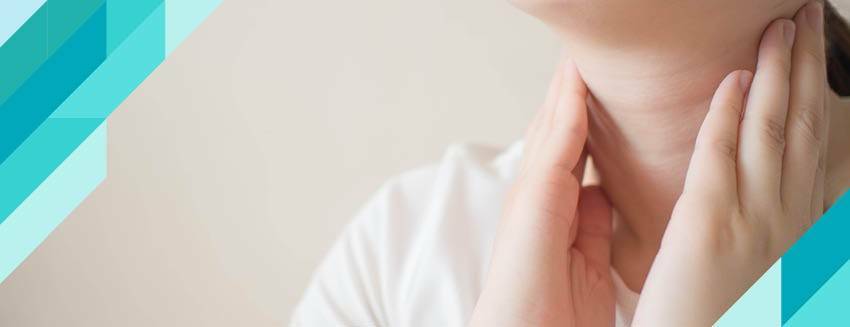Contents
Affecting approximately 250 million people worldwide, lymphedema is a chronic and progressive disease. Lymphedema, which can be seen in any part of the body such as the face, genitals, arms and legs, shows symptoms such as heaviness, feeling of tension, weakness, fatigue, tingling and numbness in the affected area. Stating that physical activity increases the working speed of the lymphatic system, experts recommend that exercises specific to the edematous area be performed regularly.
Üsküdar University NP Feneryolu Medical Center Physiotherapist Zeynep Bahadır Ağce said that the lymph system is vital for the body.
Reduces quality of life
Giving information about the way the lymph system works, Zeynep Bahadır Ağce stated that lymphedema is a chronic and progressive disease and said the following:
"There are two systems responsible for returning the blood pumped from our heart back to the heart. One of them is the veins we are all familiar with and the other is the lymph system. The lymph system surrounds our whole body like a spider web, except for the brain, spinal cord, eyes and bones. Its task is to ensure that the tissue fluid between cells is returned to the circulatory system. When the lymphatic system does not work well, the intercellular fluid accumulates abnormally in the tissues and lymphedema develops. It can be seen in any part of the body such as the face, genitals, arms and legs. Since it is a chronic and progressive disease, its treatment is of great importance for the quality of life of the individual."
May cause damage over time
Stating that lymphedema is a disease caused by the imbalance between the flow rate of fluid in the capillaries and veins and the flow of the lymph system, Physiotherapist Zeynep Bahadır Ağce said, "Insufficient lymph flow at the level of intercellular circulation causes inflammation and abnormal accumulation of tissue fluid containing high protein. Chronic inflammation of lymphatic structures and surrounding tissues causes irreversible structural damage over time, stiffness develops under the skin and in the lymph vessels, and physical findings such as thickening and hardening of soft tissue occur."
It starts with edema, hardening is seen in the advanced stage
Noting that there are different stages of the disease and that the clinical complaints of the patient vary accordingly, Zeynep Bahadır Ağce said, "While a patient who comes in the early period talks about an edema that increases towards the evening and decreases in the morning, in the later periods, he/she mentions that the edema no longer passes and hardening of the skin tissue develops over time. Patients with very advanced disease may say that they have fluid flow in their skin from time to time."
Beware of regional heaviness, feeling of tension and fatigue!
Emphasizing that the symptoms of lymphedema include different physical complaints such as heaviness, feeling of tension, weakness, fatigue and/or tingling, numbness in the affected area, Zeynep Bahadır Ağce said that pain complaints are not common, but for different reasons, lymphedema patients may experience additional problems such as pain, range of motion, restriction in movements.
How is lymphedema treatment performed?
When we say lymphedema treatment, pneumatic compression devices, complex decobjective treatment and surgical approaches come to mind. The most preferred method in our country is pneumatic compression devices. It supports the reduction of edema in the limbs with 2 hours of use per day, but it cannot provide enough effect in patients with hardening of the skin and side effects such as edema in the genital area may occur. Complex decongestive therapy is performed by physiotherapists trained in this field. The treatment includes lymph drainage, skin care, bandaging, exercise and the design and use of custom-made compression garments. In the complex decongestive treatment concept, there is usually a maximum reduction in the affected area in 10 sessions. Afterwards, a customized pressure garment is designed. It is important to maintain the size gained as a result of the treatment until the pressure garment reaches the patient. In surgical approaches, microsurgical techniques that create new connections between lymph-lymph vessels, lymphatic vessels and lymphatic veins, lymph node transfer or liposuction are not performed. Combining surgical treatment with complex decongestive therapy is recommended for better results.
Stating that lymphedema treatment is usually performed with the support of pneumatic compression devices, Ağce stated that after the maximum thinning in the area is achieved with the treatment, a suitable compression garment is designed for the person.
Listen to these recommendations
Emphasizing that patients with lymphedema must be treated by specialists in this field, Ağce stated that the area can reach normal or near-normal dimensions with a decrease in edema after treatment. Noting that patients must use a specially designed pressure garment regularly, Ağce said the following:
"We recommend renewing the pressure garments every 6 months. The area with lymphedema should be kept clean, it is important to wash it twice a day with soap and then dry it well and perform regular skin care with creams with a Ph of 5.5. Care should be taken against conditions such as ingrown nails and fungal infections that may cause infection in this area, and the skin should be checked every day. Another issue to be considered is the level of physical activity. Physical activity increases the working speed of the lymphatic system, so patients should regularly perform exercises specific to the edematous area and increase their physical activity level in general. Weight control is important in patients, weight should be maintained within normal limits, otherwise weight should be lost. Provided that the recommendations regarding lymphedema care are followed, patients can continue their daily lives comfortably. There is no problem for lymphedema patients to lie on the edematous area, sunbathe, swim in the sea or do heavy physical activities. The patient, doctor and physiotherapist should cooperate in order for the treatment to be maximally effective."

